How Long Does It Take for a Dog to Get Used to a New Puppy?
Published: Last updated: by Jessi Larson Affiliate Disclosure: We hope you love the products we've recommended! As an Amazon Associate we earn a small share from qualifying purchases.When you welcome a new pup into your home, you’ll likely wonder how long does it take for a dog to get used to a new puppy?
Here’s the scoop: It generally takes about three weeks.
But the exact answer to the question depends entirely on the personality of the two dogs you are introducing. Here are ways you can help create a healthy, balanced relationship between them.
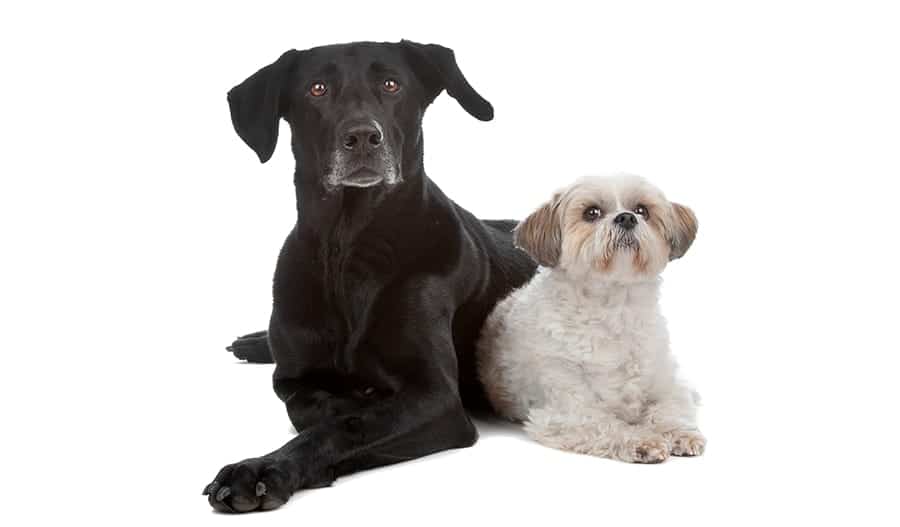
What You Should Know Before the Introduction
Establishing a basic strategy can be helpful in setting your dogs up for a smooth meeting. On the other hand, neglecting these points can undermine your dogs’ chances of getting along.
Your older dog may not welcome a new puppy in the way you had hoped
Many dog owners think their older dog will immediately fall in love with the new addition and be as enamored with them as they are.
Older dogs, however, have a tendency to be distrustful of newcomers that threaten to upset their well-established order.
So don’t be alarmed if your adult dog doesn’t seem thrilled – simply tolerating the pup is a good enough response at the start.
Growling is a natural and necessary means of communication
Going along with the previous point, your adult dog will need to clearly communicate to your new puppy in order to teach them ground rules and boundaries. And luckily, most adult dogs are wonderful teachers.
But this means that your dog will exhibit growling and may even show teeth if your pup doesn’t back off in time.
Don’t discourage growling, and try to view it as a necessity for your adult dog.
Puppies can become overwhelming for your adult dog
Puppies are huge balls of energy with almost zero manners, and as such, they can quickly become a nuisance to a dignified, older dog.
It’s important to keep this in mind and not expect your adult dog to put up with everything the puppy does.
Instead, you should supervise and intervene with a time out if energies start to run too high.
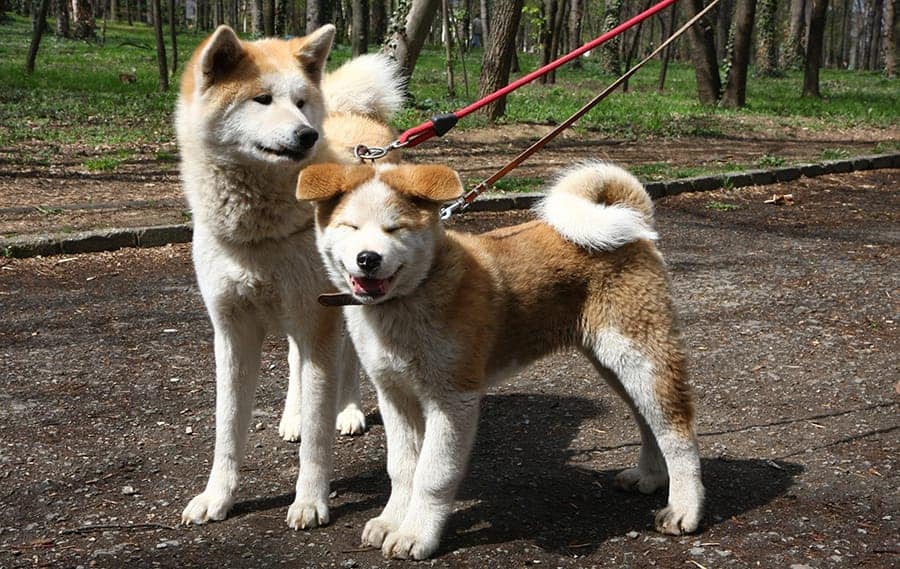
Ways To Encourage Bonding
With these principles in mind, you can start to encourage a respectful friendship in your dogs.
As you question how long does it take for a dog to get used to a new puppy, the following activities will support their bonding and speed up the process.
1. Go on leashed walks together
One of the best ways to encourage bonding in dogs is to take them on walks together.
You can use a leash coupler and keep each dog following your lead.
This exercise not only expends energy and builds pack mentality but also establishes you at the head of that pack. Your dogs will automatically have something in common – you as their leader.
2. Show preference to your older dog
This may seem unfair, but you should maintain your adult dog as the “alpha” of the two.
That means giving attention to your adult dog first, designating their toys and sleeping space that’s safe from the puppy. This will keep the adult dog secure in their position in your family and decrease jealousy or aggressive behavior.
3. Get a separate food bowl, bed, and set of toys for your new puppy
Puppies love to take toys and other objects that your adult dog may greatly value. You can help prevent these situations by getting your new puppy a separate set of toys and discourage it from poaching from your adult dog.
To do this, just say “no” and redirect the puppy to another activity while returning the toy to your adult dog. This will help reinforce that they are still at the head of the pack.
4. Offer breaks to prevent your dogs from getting overwhelmed
A good way to help your dogs get used to each other is to offer plenty of alone time to calm down and take a break from one another.
When you notice your pup getting out of control or your older dog starting to get annoyed, offer a break in a crate or a separate room to either dog.
This is especially helpful for the adult dog, who may be overwhelmed by the energetic puppy, but it’s also beneficial for the puppy to rest and have a chance to wind down.
5. Give an exit option
Even with routine breaks, you should still give an exit strategy to either of the dogs in the initial weeks of introduction. This is to help them seek out alone time or disengage from play when needed.
Avoid spaces where the dogs can feel cornered or trapped by the other – especially if there are signs of friction or aggression.
6. Be ready to intervene
Some dogs get along inherently, while others never come to an agreement. It’s very important to supervise your dogs when they’re getting acquainted and that you’re prepared to intervene in case one of them crosses the line.
Keep in mind a certain amount of growling is normal, but if you suspect one of the dogs might become aggressive or possibly hurt the other, you should focus on obedience training before going forward.
Signs that you should intervene include:
- Your puppy yelping or squealing during play, but your adult dog doesn’t back off
- Aggressive body language coming from either dog (some puppies are larger and stronger and can try to dominate the older dog)
Any of these instances should be met with immediate intervention and obedience training. In some cases, certain adult dogs just will not tolerate a puppy and you may need to reconsider the addition.
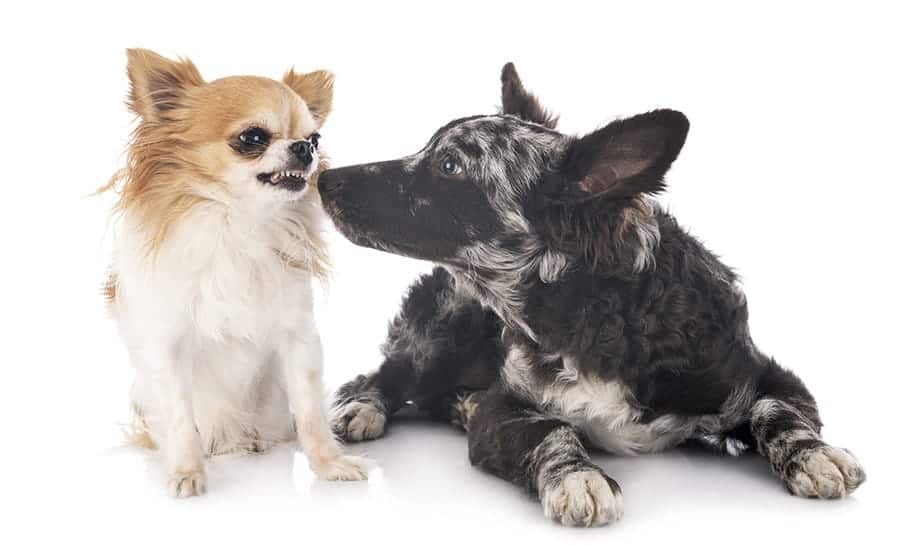
Bonus Training Video: How to Introduce Dogs
The question of how long does it take for a dog to get used to a new puppy is heavily influenced by your actions. And this includes how you introduce the two dogs in the first place.
Popular dog trainer Zak George offers fantastic advice for new dog owners, and lucky for us, he’s put together a video on how to introduce dogs that’s a must-watch.
Take a peek – you’re sure to find some helpful tips and tricks for how to introduce dogs and ensure a smooth relationship.
Final Thoughts: How Long Does It Take for a Dog to Get Used to a New Puppy?
With a bit of supervision and discipline, your dogs will soon be enjoying their time together. But before that happens, it’s important to stay mindful of their respective energy and needs to prevent any hiccups.
The question of how long does it take for a dog to get used to a new puppy depends entirely on the dog and the situation. But for most, you’ll see a basic comfort level within a month.
Ultimately, most dogs will naturally bond and bring each other loving companionship, making your efforts well worth your while.
Bonus Training Tip
As you work on introducing dogs, you may get frustrated at times. Don’t worry, it’s normal to feel overwhelmed. But you can control how you react.
If you feel like your patience is wearing thin, separate the dogs, take a deep breath and count to 10. This will help you feel refreshed and ready to start again.
When you continually and clearly communicate your expectations, this sends a strong message to your dog about what you want them to do and how they need to act.
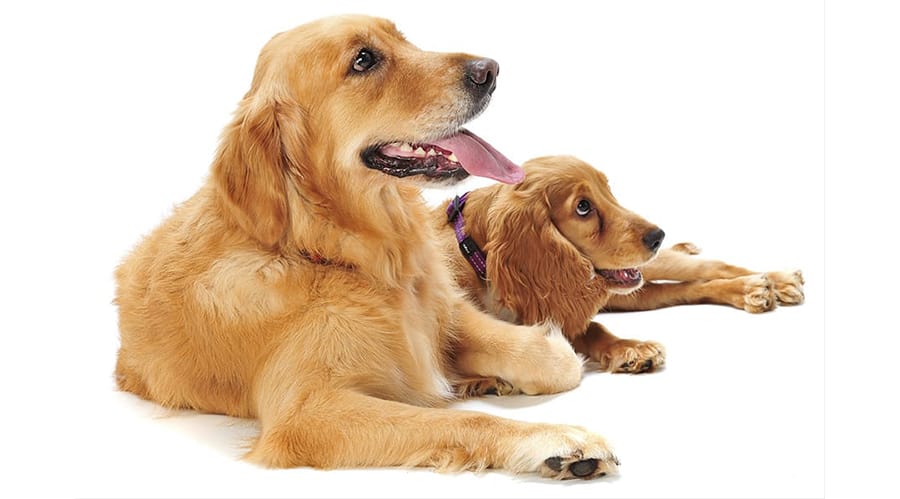
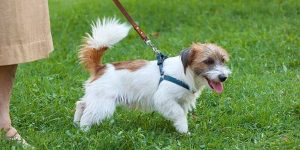
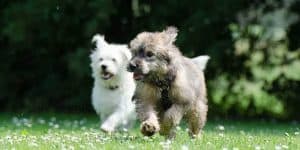
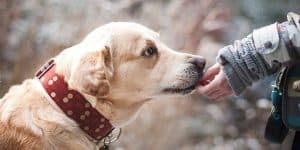
 Getting a New Dog?
Getting a New Dog?